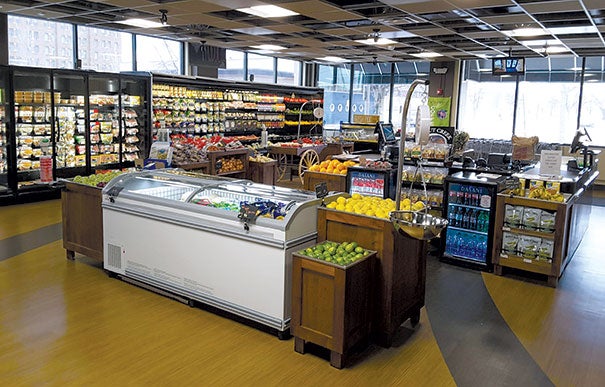ProMedica opens grocery store offering healthful choices in food desert
 |
| Photo courtesy of ProMedica The new Market on the Green grocery store opened by ProMedica offers healthful food in an underserved neighborhood. |
ProMedica, Toledo, Ohio, recently opened a full-service grocery store in a renovated building that now provides healthful and affordable food choices in a formerly designated food desert.
Market on the Green offers fresh meat, produce, dairy products, baked goods, frozen foods and other personal necessities, such as toiletries and household goods. Many of the food items are locally sourced.
The 5,000-square-foot grocery store is located in a facility donated by the city. The store is part of the ProMedica Ebeid Institute, a center ProMedica hopes will become a community hub “where healthy living takes root.”
Plans call for the renovation of additional floors in the four-story institute to offer health screenings and education, cooking and nutrition classes, job training and financial literacy to area residents. The institute was made possible by a $1.5 million philanthropic gift.
Kate Sommerfeld, corporate director, social determinants of health, ProMedica, says the grocery store and Ebeid Institute serve as ProMedica’s commitment to addressing hunger, food access and job opportunities.
“Like many cities across the country, food access is a real issue in Toledo. We have a number of food deserts,” Sommerfeld says.
To encourage residents to make smart choices, ProMedica prices healthful foods cheaper, she adds.
Sommerfeld says the teaching kitchen — to open later this year in the next phase of the renovation — will make the institute distinctive. It’s one thing to buy healthful, fresh food and entirely another to learn how to use it in cooking, she notes.
In addition, the store hires neighborhood residents who are looking for a second chance. Workers learn basic skills and can participate in job development training and education, she says.
Brian McNulty, senior project engineer, construction department, ProMedica, says building the grocery store required the installation of new mechanical systems and structural shoring of the first floor.
“We came in and pretty much gutted the entire building. We got rid of the asbestos and repaired the roof, which was caving in and had been leaking,” he says. The work took about eight weeks to complete.
Though vacant for more than two decades, the building was notable for the artwork created by the local arts commission on standard plywood that covered the first-floor windows. To preserve the art, the images were screen printed onto film placed on the new windows installed in the renovation.
All of the planning and hard work involved in building and operating a grocery store have paid off. “We’ve had a great response by the community,” Sommerfeld says.




